
By Prof. (Dr.) Chris Mensah-Bonsu, Ph.D.
MB Energy, California, USA ([email protected])
Ghana’s electric power system and energy delivery infrastructure have been plagued for many years consistently with persistent and widespread power outages and load shedding, which in some cases occur multiple times in a day and last for hours or even days on end. The electric power blackouts “dumsor” continue unabatedly to frustrate residential and commercial customers, business, economy and government, due in part to several factors. Some of the problems are self-inflicted and preventable while others are part of normal business but could benefit from better policies, planning, maintenance and system operations management. The resulting interruptions to business, commercial activities, livelihood and financial losses are enormous and immeasurable. The intent of this article is seek an honest dialogue about our energy sector and how best to holistically address the many problems that are so evident to many of us while commending the industry practitioners and policymakers for their stellar work so far amidst the available limited resources.
Main parts of the Ghana electricity system
Unlike the hands-on electric industry practitioner or policymaker who is involved in the day-to-day aspects of the power and energy sector, the Ghanaian most likely has only heard much about power generation capacity shortfalls, “Akosombo”, fuel shortages and power outages through radio and television (TV) commentaries and, harshly experienced it through their prepaid and postpaid electricity bills and dumsor. However, the electricity system is more than just that. Like most countries, the electricity system of Ghana comprises three main subsystems, namely the Generation subsystem, high voltage Transmission subsystem, and the Distribution subsystem which also encompasses the electric end-users (load or customer).
Included in the Ghana transmission subsystem are 161 kilovolts (kV), 225 kV and 330 kV high voltage electric power transmission tie-line interconnections (tie-lines) which connect Ghana to the electric systems of its neighboring countries, namely Ivory Coast (CIE-Compagnie Ivoirienne d’Electricite), Burkina Faso (SONABEL – Societe Nationale d’Electricite du Burkina Faso), and CEB (Communaute Electrique du Benin). The CEB tie-lines serve both Togo (CEET – Compagnie Energie Electrique du Togo) and Benin (SBEE – Societe Beninoise d’Energie Electrique). The tie-lines and associated equipment allow for electricity exchanges (i.e., energy import and export transfers) between Ghana and its three neighboring countries for bilateral energy trades or when real-time system operations reliability calls for it.
The three main subsystems together form a complex power generation and energy delivery system. To achieve a safe, reliable, secure and resilient electricity system, this complex electric power system must be well managed, operated and transparently coordinated in a seamless fashion among all Ghana’s energy sector players and the transmission grid operators of its neighboring countries. Above all, the system must be normally predictable, offer continuous and uninterrupted electric service and fair electricity bill to the end-user.
It is worth mentioning that this complex electric power system is capital intensive as it requires not only a well-trained and disciplined personnel but also huge amounts of money and creditworthiness for its planning and analysis, development, construction, operation, monitoring, upgrade, maintenance, electricity bill settlement, invoicing and collection. For example, a very recent report by Ghana Grid Company (GRIDCo) puts the estimated cost for the yet to be constructed 122 kilometer-long 330 kilovolt double circuit transmission line (DCTL) connecting Dunkwa in Ghana to Biahoue (Bijave) in Ivory Coast at $181 million (154.4 million Euros). This cost covers among others, equipment, construction, inspection, environmental and social impact mitigation and project management. The cost of substations and other key high voltage equipment such as power transformers, circuit breakers, etc., are not cheap either.
To appreciate the totality of the problems facing the Ghana electric utility industry, it is important to understand the various aspects of the electric subsystems as described earlier. This will allow for a better planning and analysis to identify both the present problems and future needs that are specific to each of the individual subsystems and come up with a holistic technical, policy, market, and in some cases administrative recommendations for implementation. Deliberate measures must be taken to prioritize the funding and implementation of the approved recommended power grid solutions as a crucial national agenda irrespective of the political party in government or the active industry executives.
The Generation Subsystem
The Generation subsystem encompasses the different types of power plants or generation resources that produce electric energy and inject it to the electricity system either at the high voltage transmission subsystem or directly at the Distribution subsystem. The energy produced is ultimately used by electricity end-users (i.e., customers or consumers).
Different generation resource types (i.e., power plant) use different types of fuel for electricity production. In Ghana, the predominant fuel types used for producing electricity by some of the major power generation plants are:
- Water for the Akosombo, Bui and Kpong hydroelectric power generating plants.
- Natural gas (NG) for Sunon-Asogli, TICO, TAPCO, Genser, Anwomaso, Kpone and Bridge Power plants.
- NG/Light crude oil (LCO) for Cenpower, TICO, TAPCo, Kpone, Cenit and Twin City thermal plants.
- Heavy fuel oil (HFO) for Karpower and AKSA.
- Diesel fuel oil (DFO) for Kpone.
- Solar for Bui and VRA Kaleo renewable energy generation resources, a total of 55 MW and 28.8 MW respectively. There are also the Chinese BXC 20 MW and Meinenergy 20 MW solar projects in operation in Winneba, Central Region and Pru East District, Bono East Region respectively.
As can be seen from the sample list of generation resources above, there are a number of the generating units that can be dually powered by both natural gas and LCO (as backup), with a very limited number of them using diesel fuel oil (DFO) either as primary or an alternative plant fuel.
The current total installed generation capacity in Ghana is approximately 5,740 megawatts (MW). The ownership of this power capacity breaks 60.5 percent for independent power producers (IPP), including Bui Power Authority (Bui) and comprising 3,474 MW from 12 aggregated resources. The remaining 39.5 percent installed capacity is owned by Volta River Authority (i.e., Ghana government) and consists of about 2,269 MW from 9 aggregated generation resources, including Kpone thermal plant, Akosombo and Kpong hydroelectric power plants.
These power plants are predominantly and physically located in the eastern and western territories of the southern part Ghana, specifically Akosombo, Tema and Takoradi areas. This power plant siting structure leaves the vast remaining parts of the country as energy resource deserts, except for the 250 MW Anwomaso thermal power plant (i.e., the relocated former AMERI plant) and 458.5 MW Bui power plants that are located in Ashanti and Oti regions (middle and northwestern part of the country) respectively. The total Bui generation capacity includes a 55 MW solar photovoltaic renewable energy resource. This is the single largest and one of only two grid-connected renewable energy resources in the entire country. The other one is the 28.8 MW VRA Kaleo solar energy.
The United States and Europe Union, for example which have relatively limited all year-round solar exposure than Ghana, boast of significant amount of wind and solar renewable energy as part of their overall energy resource mix and the trend continues to grow. California’s in-state solar and wind generation alone accounted for 38 percent (i.e., 204,480 GWh) of the total source of electric energy generated in 2024, including utility-scale and rooftop solar distributed generation. Solar alone accounted for about 25 percent of California’s electricity generation.
For the entire United States this was 17 percent in 2024 (i.e., 756,621 GWh) with solar being the fastest growing source of electricity. For the European Union, wind and solar renewable energy featured 30% in 2024 with fossil fuel slipping to about 27 percent (27%). However, in Ghana where renewable energy fuels are in copious abundance, solar and wind energy connected to the grid and operating are negligible and almost conspicuously missing from the overall energy mix portfolio. This is at the backdrop of the Ghana’s Renewable Energy Sub-Code for NITS and Renewable Energy Act, 2011 (Act 832) that seek to promote integration of renewables as part of the country’s energy mix objective.
As of June 2025, power grid system planning and operations information currently available puts the approximate value for the total installed power generation capacity from existing power plants in Ghana at approximately 5,740 MW with a historical maximum in-country electric system peak load of 4,073 MW in March 2024. The maximum system peak load is forecasted to be 4,338 for the current year, 2025.
This is a significant and dramatic load growth in the past 10-years compared to the all-time peak load of 1,970.9 MW in 2014. Characteristically, Ghana’s electric system load (demand) profile is typically almost flat and only ramps up sharply in a day from 6:00pm to 7:00pm and steadily reaches a system peak load between 7:00pm and 9:00pm approximately, before gently ramping down. With the existing 5,740 MW installed generation capacity and by purely considering generation sufficiency in relation to the 4,000 MW maximum electric system peak load (demand) served in 2024, one should not have expected Ghana to have experienced that level of persistent and intractable episodes of dumsor. Currently, the electricity situation is yet to improve
Recommendations for addressing the inherent structural problems in the Generation Subsystem
- Structurally restricting almost all the existing power plants to a very limited part of the country (i.e., the three generation pockets in the south of the country) and with a biased power plant fuel, some of which are also inelastically dependent on import procurements from a foreign country (i.e., Nigeria via the West African Gas Pipeline), serve as two major contributing factors to our electric power and energy problems and ultimately dumsor.
Diversifying the power generation fuel mix to include significant penetration and integration of wind and solar photovoltaic renewable energy across the length and breadth of the country will strongly enhance the reliability of power supply, provide the needed relief for existing hydro and thermal power plants, especially during periods of poor hydro conditions, scarcity of natural gas and LCO plant fuels.
The author recognizes the three existing Floating Production, Storage and Offloading (FPSO) vessels and the rich sources of natural gas for power generation from the offshore Ghana oil and gas fields such as the Jubilee and TEN operated by Tullow Oil, Sankofa operated by Eni and Cape Three Points operated by Vitol Group as well as the offshore raw natural gas processing plant at Atuabo near Takoradi. The FPSO plays a critical role in Ghana’s offshore oil and gas production, handling the extraction, processing, storage, and offloading of hydrocarbons. Despite the existence of these facilities, Ghana struggles to meet its electric power needs, especially during FPSO maintenance.
- Additionally, developing and installing grid-connected wind and solar photovoltaic renewable energy at key locations of the NITS and distributed generation directly in the Distribution subsystem provides alternative non-transmission cost saving options. This option will reduce the cost of constructing new and expensive long transmission lines as well as enhance the overall power supply, reliability of the system and real-time system operation
- Another area that should be of primary concern to government and electricity consumers are the runaway electricity cost (bills) and routine electricity rate escalations or hikes. These trends could be attributed to higher cost of power contracts and purchase agreements, cost of producing electricity and potentially lack of rigorous monitoring and auditing of power plant performance, operations, fuel usage and energy produced.
Other sources for higher cost of electricity could be lack of transparency in invoices that are issued to the power distribution companies, namely Electricity Company of Ghana (ECG), Northern Electricity Distribution Company (NEDCo) and Enclave Power Company for energy produced in response to that scheduled and dispatched by GRIDCo compared to the timing of and actual energy delivered at the bulk supply meter and distribution network in-take points. Transparency in tracking the fuel used by the generation units, energy produced out of it and metered in response to GRIDCo,s power dispatch instructions could lend itself to proper accounting of generation unit downtimes and uptimes, actual delivered revenue-metered energy, technical and commercial energy losses. It will also afford personnel good insights into system problems and come up with corresponding mitigations and find areas to reduce cost of operation for power producers, GRIDCo, load serving entities and end-user electricity bills.
- To facilitate expansion of natural gas power generation capacity system-wide, develop and build gasification depots around the country at strategic locations of the NITS as an interim solution for converting liquefied national gas (LNG) to power plant-quality fuel. In the long-term, plan on constructing more pipelines to convey natural gas fuel to feed power plants at the strategic inland locations of the power grid.
- A combination of power plants fueled by solar, and wind renewable energy, hydro, and natural gas strategically developed and placed around the NITS, distribution subsystem and end-user locations (distributed generation) across the country will provide robust supply capability, tremendously improve operational reliability and save cost.
Additional recommended solutions for the Generation subsystem.
- To improve on generation effectiveness, enhance electric service reliability and allay dumsor, generation resources with more diverse fuel mix must be constructed optimally and at key locations across the length and breadth of the country. This could be achieved by augmenting the existing generation resources which are predominantly natural gas powered and almost all of them located in the south of the country with significant penetration of solar photovoltaic and wind renewable energy. Real data exist that supports sufficient and commercial production levels of solar energy everywhere in the country and significant wind energy on the Tema-Ada-Sege corridor.
Battery energy storage systems (BESS) with at least a four-hour discharge capability could also provide critical supply addition, especially during the late evening hours when load is sharply ramping up and at its maximum peak while generation supply scarcity is eminent.
- The Ghana Energy Commission (EC), Public Utilities Regulatory Commission (PURC), GRIDCo, Electricity Company of Ghana (ECG) and Northern Electricity Distribution Company (NEDCo) must lead the way to facilitate an aggressive and robust company and private sector participation in the development and integration of renewable energy, specifically wind and solar photovoltaic. Small-sized run-of-the-river hydroelectric renewable energy development could be an option for power supply efficiency and enhanced system reliability to the extent the water flow and turbidity are not adversely impacted by galamsey mineral mining activities.
- Ensure strict coordination among the energy sector agencies in the planning and operation of the electricity system, in terms of coordinating planned equipment outages, forced outages, outage management, managing emergency conditions as well as coordinating power exchanges with our neighboring countries. Plan ahead and engage other key stakeholders, especially about eminent system events, outcomes and measures to be taken on the system and customer end, including voluntary electricity conservation (demand response).
- Ensure absolute transparency in operating the generation subsystem by monitoring, recording/reporting, tracking and archiving every electron flow from generation sources against their fuel usage, Thus, match GRIDCo’s (system operator) scheduled power and dispatch instructions against actual energy produced and injected to the grid by each generation unit. Transparency in generation system operation and strict auditing of individual power plants energy production against their metered energy will ensure efficiencies in performance, energy production, fuel usage and accurate billing by power producing companies with a potential to reduce cost to distribution companies and electric end-users.
- Increased transparency in the overall power system planning, operation, maintenance, plant fuel accounting, and properly managing emergency conditions will allay dumsor and enhance both investor and end-user confidence.
- The media has an obligation to vet and empanel credible power and energy sector experts comprising practitioners, technocrats, researchers, policymakers and allied personnels who have direct and hands-on knowledge about the industry to constructively dialogue, diagnose and prescribe good solutions to address the energy sector issues. This will bring focus to real and informed concerns, aid better planning, avoid panic and provide certainty and boost investor confidence.
The High Voltage Transmission Subsystem
The transmission subsystem is the backbone of the entire electricity system. It generally spans all the high voltage side of power generation stations, high voltage transmission line conductors, transformer banks and other equipment that are found between the generator step-up (GSU) transformer and the distribution step-down (DSD) transformers at the bulk distribution subsystem supply in-take points. This is referred to as the bulk electric system (BES) and for Ghana, it comprises voltage levels of 69kV and above.
Simply stated, the electric power transmission subsystem moves electricity from generation plants through the bulk electric system to the distribution companies’ service territories. Depending on the country, this may also include the 69 kV, and even the 34.5 kV (or 33 kV medium voltage level) sub-transmission voltage facilities that deliver power directly to local areas for final distribution to industries, businesses and homes.
The transmission system is built to carry large amounts of electric energy from the generation sites through longer distances to the distribution subsystem where they are distributed to electricity end-users. A well-planned high voltage transmission grid ensures generation adequacy, transmission security, resiliency, safe and reliable operation of the grid. This is achieved by conducting accurate and periodic reliability, economic and policy studies, based on expectations for load growth, generation adequacy and equipment constancies.
Transmission studies and analysis are conducted to identify present problems, and future transmission and generation resource needs of the electricity system. The resulting power transmission grid study report should document existing and expected problems of the system and recommended solutions for addressing the corresponding problems. In particular, the study report must identify locations of need for resource development and to bring technical and economic benefits to developers and electric customers.
In Ghana, the high voltage transmission subsystem is referred to as the National Interconnected Transmission System (NITS). The NITS generally covers the 330 kV, 225 kV, 161 kV, 69 kV, and to some extent, the 33 kV (34.5 kV) voltage levels. It is equipped with fiber optic cables to facilitate communication services. The Transmission subsystem carries the power produced by power plants at the southern part of Ghana, inland Anwomaso thermal and Bui hydro power plants to the bulk power supply points, including power transported through the west, Volta and Ashanti regions to the northern and other parts of Ghana. It is also the vehicle for power exchanges between Ghana and each of its three (3) neighboring countries. This Transmission subsystem is the domain of the Ghana Grid Company (GRIDCo).
GRIDCo’s core responsibilities are two-fold. One of them is to see to the planning, upgrading and maintenance of the NITS, including managing vegetation to ensure tree branches and vegetation do not come into direct contact with the transmission facilities to cause short circuit faults. It must have a well-trained facilities and maintenance crew on standby and ready to address transmission equipment issues. The other function is to serve as the national real-time power transmission system operator. As a system operator, GRIDCo’s functional responsibility focuses primarily on real-time system operations. It plans and manages transmission outages, forecasts load, schedules and dispatches available generation resources to meet real-time load without overloading transmission circuits and network equipment such as transmission lines, transformer banks, circuit breakers, terminal equipment, and other limiting equipment. In other words, GRIDCo also maintains generation-load (supply-demand) balance. Thus, a just-in-time on-demand energy balancing while ensuring transmission system is operated within constraints.
In order to meet the time-varying real-time energy demand, ensure system reliability and security at all times, ancillary services are procured. In terms of power systems operation, ancillary services consist of regulation-up, regulation-down, spinning reserve and non-spinning reserve. Regulation up and regulation down products are used to balance energy on a 2 to 4-seconds basis to control frequency within acceptable limits. Spinning reserve and non-spinning reserve constitute operating reserves.
Operating reserve capacity is measured in megawatt (MW). Operating reserve capacity is a system insurance product or standby capacity that is procured from power generation and or dispatchable load resources whose operational characteristics are such that they can be called upon, dispatched and ramp up fast enough to produce and deliver the needed energy within 10 minutes. Operating reserve capacity is procured ahead of time and used in real-time if system reliability calls for it. In most cases, and depending on the transmission utility provider, the target operating reserve capacity is set based on the minimum operating reliability criteria (MORC) of the particular system. Thus, the required total megawatt amount is typically defined by the MW impact of the loss of the largest single transmission line or path, generation unit or transformer bank (i.e., the most critical and consequential equipment contingency) while accounting for pockets of ancillary service needs.
The Ghana transmission system continues to experience difficulties in transporting power to the distribution system and in some cases across the tie-lines due to equipment outages and transmission bottlenecks under certain normal and emergency system and operating conditions.
There are several recommended actions that could be taken to address these problems and achieve a safe, reliable, secured and resilient power grid to ensure energy gets to where it is needed just in time without discrimination and at a fair cost to the end users and power producers while the transmission system remains reliably intact at the same time.
Recommendations for transmission grid planning and system operation
- First and foremost, Ghana Grid Company must conduct transmission system planning studies on an annual basis by looking ahead 3-, 5- and 10-years’ time horizon in each planning year by using applicable planning standards (e.g., 2009 National Electricity Grid Code of Ghana, 2008 Electricity Transmission (Technical, Operational and Standards of Performance) Rules (L.I. 1934), etc.,). The study must be such that it tightens system reliability linkages among generation resource diversity and adequacy, transmission network constraints and scenarios of load growth and generation dispatch. This will ensure that system concerns and recommended mitigated solutions are identified well ahead of time to allow for sufficient stakeholder participation, project approval, capital budgeting, financing and implementation.
The resulting annual grid planning study report must document current problems and future grid reliability, economic (cost-benefit analysis) and policy concerns and recommended solutions to address the identified problems, including local generation capacity requirements. Most importantly, it must identify locations for resource development to bring technical and economic benefits to developers and electric customers.
The annual transmission planning study report and recommended capital projects therein must be prepared and signed off by GRIDCo executive management team and reviewed and approved by the GRIDCo Board each year. The approved report should form the basis for capital project procurement and licensing by the Ghana Energy Commission.
- The transmission grid study must begin with a transparent transmission planning process to be led by GRIDCo and with participation from all the power sector stakeholders. This will open the study to complementary points of view and evaluation.
- Most of the grid code, standards documents, operating procedures and special protection schemes (e.g., the Grid Code and Transmission Rules) were developed many years ago and may not be as effective in addressing current problems.
Review the existing grid codes, standards and rules (e.g., the 2009 National Electricity Grid Code of Ghana, 2008 Electricity Transmission (Technical, Operational and Standards of Performance) Rules (L.I. 1934), operating procedures and energy policies to ascertain that they are effective and can still address today’s problems facing the energy sector and make the necessary revisions accordingly.
- Energy sector agencies such as the Ghana Public Utilities Regulatory Commission (PURC) must engage load serving entities (e.g., ECG, NEDCo and Enclave power) to procure power capacity contracts with energy producers, including imports to satisfy the 120% transmission planning reserve margin (PRM) requirement by focusing their power procurement in key transmission areas. This will feed into the proposed private sector participation initiative in terms of developing generation resources, particularly in key grid level, distribution system and local network areas to ensure sufficient grid and local resource adequacy across the country.
- System operations planning analysis (SOPA) is conducted each day covering the “Next Day’s” real-time operations and typically two additional days beyond the “Next Day’s real-time operational timeframe. The SOPA will provide advanced warning about impending system conditions, aid better operational preparation, accessibility to accurate refinements of forecasted system conditions, including expected demand profile, branch and equipment loadings, pending equipment outages, generation statuses and availability.
- As insurance for unplanned outages, for example the loss of the largest generation unit or the maximum current-carrying high voltage transmission line, operating reserves must be procured. Operating reserves can be very expensive to procure due to its reserve capacity cost and potentially additional higher costs when converted into energy in real-time. To improve on real-time system operational reliability, reduce the cost of procurement, operation, electricity and ultimately provide uninterrupted electric service and relief to customer electricity bill, ancillary services, particularly spinning operating reserves and non-spinning operating reserves must be optimally procured.
- There must be proper management and coordination of generating resource and transmission equipment outages and corresponding customer-end demand response. Under certain system emergency conditions (e.g., when electricity production/supply is tight and high electricity demand is anticipated or when transmission line and equipment loadings and outages threaten or constrains/limit transmission grid capability), GRIDCo must be allowed to declare emergency operational status, instruct itself and caution plant fuel suppliers, generator owners and distribution network operators to avoid taking fuel and grid assets offline for routine and planned maintenance. This is to ensure that plant fuel and grid resources (generating units and transmission system branches) are available to serve the load.
Reducing energy usage during power system emergency conditions and real-time peak load hours can aid grid reliability, preserve supply and alleviate or completely prevent the occurrence of dumsor (i.e., rotating blackouts). Accordingly, GRIDCo, ECG, NEDCo and Enclave Power must coordinate among themselves and urge electric consumers to exercise voluntary conservation of electricity all the time and most crucially under power emergency conditions.
- Keep a well-documented record of all previous, known and observed power system incidents and outages that resulted in reduced grid capability and inability to provide uninterrupted electric service and necessitated dumsor. Develop related measures and operating procedures for those system events or propose and implement capital projects in cases where the issue occurs on routine or repetitive basis.
Develop new operating procedures based on new system or expected system events and incidents, update existing operating procedures regularly and train personnel to better apply them as needed.
- Establish frequency response margin (FRM) of about 8-10 percent on individual plant basis for online regulating generation units to assist in addressing unacceptable power frequency excursions. Thus, to enhance load-frequency control.
- Upgrading and adding new lines and equipment for addressing, for example low voltages, transfer capability issues, etc., can be very expensive. This is where transmission utility-scale and distribution network-connected (rooftop solar) wind and solar photovoltaic renewable energy and battery energy storage system (BESS) options can be attractive. These options provide reliable non-transmission alternatives and cost savings for transmission and generation.
- Another aspect of the Ghana electricity system that has not come to the fore and almost seldomly discussed is the area of critical infrastructure protection (CIP). Physical and cyber security violations could potentially pose catastrophic impacts and imperil the Ghana electricity system in such a manner to lose its ability to operate and deliver to its mission. The cost of rebuilding and bringing essential and damaged power equipment back in service due to physical and cyber security incidents could be expensive and with long lead times. Measures must be taken as a matter of immediate urgency to consider assessing the electricity system and train all energy sector personnel and policymakers about critical infrastructure protection requirements, security awareness and recovery plans. The North American Electric Reliability Corporation standard, NERC CIP-012-2 Cyber Security Standard, could serve as a good starting guide.
Additional recommended solutions for the Transmission subsystem
- To reduce the cost of installing new and expensive long transmission lines, non-transmission alternatives such as integrating collector system to accommodate solar photovoltaic, wind renewable energy and battery energy storage systems at key locations on the transmission grid and demand response or even operational solutions (operating procedures) must be encouraged as a means to meet some of the transmission needs in lieu of transmission upgrades where cost is of an issue. Power capacity alternatives such as battery energy storage systems (BESS) can play a critical role during the daily system peak hours and provide cost savings.
- Grid enhancing technologies (GETs) such as advanced conductors have high temperature, low sag characteristics and can be used to address clearance issues – with minimal tower modifications where mandated sag constrains existing capability. Other uses can be made, especially in urban areas where the higher tension capabilities and low sag characteristics allow lower towers to be employed without having to shorten spacing between towers.
- Advanced collaboration and coordination within the West African Power Pool to improve on power exchanges through improved communication, both forecasted and in emergencies are also very important in ensuring safe and reliable operation of the transmission tie-lines.
The Distribution Subsystem
The Distribution subsystem is the last and an important part of the electricity system. Electric loads are embedded in the distribution system via medium and low voltage distribution networks. The distribution network, equipment and load effectively form part of the Distribution subsystem. The Ghana Distribution subsystem operates at 33kV and 11 kV medium voltage levels, and 433 volts (0.433 kV) three-phase and 240 Volts single phase low voltage levels (i.e., 11/0.433/024 kilovolts and 33/0.433/0.24 kilovolts).
The distribution loads are generally grouped into categories. The electric load customers are together referred to as end-users. Electric loads are categorized into industrial load (e.g., the mines, Aluworks Ltd, etc.,), commercial load (e.g., hospitals, marketplaces, recreational facilities, hotels, banks, restaurants. etc.,) and residential load (homes). These categories are normally further classified by the level of the required electric service reliability. For example, hospitals, high security prison and other national security facilities that require highest levels of service availability are typically served by redundant electric feeders and multiple independent power sources and are classified as Class I facilities.
The Ghana distribution system is predominantly radial topology in nature without significant back-tie feeds. This, in itself, increases the probability of observed low voltages, frequent degradation and loss of service and increased losses under certain loading and equipment maintenance conditions. The performance of the Distribution subsystem in terms of consistent and uninterrupted electric service are guided by reliability indices such as the Customer Average Interruption Duration Index (CAIDI), Average Service Availability Index (ASAI), System Average Interruption Frequency Index (SAIFI), System Average Interruption Duration Index (SAIDI), etc., These indices help measure the frequency, duration, and extent of service interruptions and allow for evaluation of areas needing improvement.
As discussed earlier, Ghana’s electric load increased from a peak load of 1,970.9 MW in 2014 to 4,000 MW in 2024. The load continues to grow and is expected to peak to about 4,400 MW in this 2025 and continue to grow in future years. All this very dramatic electric load increase is supported by aging distribution system and equipment and without commensurable expansion or significant upgrades to the distribution system. This has led to constant and routine distribution conductor and equipment overloads, tripping and resulted in multiple electric service disruptions during the day with extended duration of service downtimes. Thus, distribution network upgrades have not kept up with load growth.
Consequently, allowing the private sector to participate in the development of renewable energy and award concessions for wires’ ownership and operation could effectively enhance system operations and guarantee continuous electric power services to customers during normal, planned maintenance, contingency and even forced outage and emergency conditions.
Recommended solutions for the electric Distribution subsystem
- In terms of private sector participation, Ghana Government through the PURC and Energy Commission must be encouraged to make provisions in these three main areas of the distribution subsystem.
- Introduce transparent and credible private end-user electricity bill collection companies to mobilize cash flows and aid financial solvency, efficiency and discipline,
- provide concessions for private sector participation in the development of distributed renewable solar and wind energy, and
- Strategically restructure the distribution load serving entity (ECG and NEDCo) space and provide concessions to allow the private sector to own, operate and maintain part of the medium and low voltage distribution wires as well as provide electric service to customers.
This will spur private sector participation and investments, introduce competition in electric service delivery and reliability, promote investments, optimize generation resource by fuel mix diversity, enhance resource adequacy and provide the needed network upgrade and expansion to address concerns with aging distribution infrastructure (equipment, network) bottlenecks to keep up with the ever-increasing electric load growth. It will also bring transparency to electricity bill collections.
The private sector entities can be in the form of, customized electric power service providers, local area electric companies, district electric service companies, municipal electricity companies, city distribution electric companies, etc.,
- The national energy policy must provide opportunities for the public (citizens) to invest in the distribution system infrastructure serving their local areas. This will give the public a sense of ownership in the service delivery and improve customer-load serving entity relationship.
- Conduct comprehensive technical and economic studies and develop distribution systems plan that identifies system upgrades and proactively implement them to adequately enhance continuous electric service delivery and meet reliability performance index requirements.
- There must be aggressive end-user education for voluntary conservation of the scarcely available energy at all levels of the energy chain, especially at the commercial and residential customer ends. For an effective electricity conservation campaign or voluntary demand response program, there must be good coordination among GRIDCo, load serving entities and electric end-users.
- Certain essential and critical facilities such as airports, hospitals, national security and financial institutions and banks that require uninterrupted electric service must be served by multiple independent/redundant sources. These facilities could also invest in uninterruptible power supply systems (UPSS) to enhance reliability of electric service.
- Key vehicular traffic light facilities could be integrated with solar photovoltaic and battery energy storage systems (BESS).
Summary of key recommended solutions for addressing Ghana’s persistent electric power outages and blackouts (“dumsor”)
In summary, to holistically develop new electricity system facilities, restructure and reinforce the existing infrastructure to address both existing problems and future needs of the energy sector, and ultimately bring to a halt the pains of dumsor, the following recommended solutions are submitted for consideration by the Ghana government, energy sector policymakers and practitioners:
- First and foremost, the energy sector stakeholders must open themselves to honest dialogue about the energy sector and how best to holistically address the many problems that are so evident to us all.
- As a matter of crucial national agenda, deliberate measures must be taken to stick to the plan and prioritize the funding and implementation of approved power grid solutions (projects) that are recommended by GRIDCo through its comprehensive annual transmission planning study and approved by the GRIDCo Board of Director irrespective of the political party in government or active industry executives.
- As the energy sector is pre-occupied with dumsor, another aspect of the Ghana electricity system that may not have come to the fore and almost seldomly discussed is the area of critical infrastructure protection (CIP). Physical and cyber security incidents/violations could potentially pose catastrophic impacts and imperil the Ghana electricity system in such a manner that it will lose its ability to operate and deliver to its mission. The cost of rebuilding and bringing essential and damaged power equipment back in-service due to physical and cyber security incidents could be expensive and may require long lead times. Measures must be taken as a matter of immediate urgency to consider assessing the electricity system and train all energy sector personnel and policymakers about critical infrastructure protection requirements, security awareness and recovery plans. The North American Electric Reliability Corporation standard, NERC CIP-012-2 Cyber Security Standard, could serve as a good starting guide for Ghana.
- As a matter of immediate urgency, in the very short term ensure that every electricity flow in the system from each generating unit (power plant) through the Transmission subsystem, Distribution subsystem and right to the end-user and generator statuses are monitored, tracked, recorded and easily reportable to ensure proper and just-in-time audit of each generation unit’s fuel usage, generator operational performance, energy accounting, and most importantly the actual energy produced compared to that scheduled, dispatched, produced and time of production. This will bring transparency to the actual fuel used by each generation resource, corresponding energy produced and in relation to invoices generated as well as providing holistic and illuminating evidence about where energy flows to and losses occur so that policymakers and practitioners can address them.
Having an on-the-spot real-time information about generating unit performance will tremendously enhance reliability of the transmission and distribution system operations. This could save the country millions of dollars in a very short time of its implementation as it will block financial and operational leakages. The system for tracking, monitoring and analyzing the information in real-time can be developed and released to production for use with enhanced critical infrastructure protection security in less than a year and in the form of software app to be accessible and viewed on smart phones, portable electronic devices and computers on a need-to-know basis.
- In terms of private sector participation, Ghana Government through the PURC and Energy Commission must be encouraged to make provisions in these three main areas of the distribution subsystem.
- Introduce transparent and credible private end-user electricity bill collection companies to mobilize cash flows and aid financial solvency, efficiency and discipline,
- Provide concessions for private sector participation in the development of distributed renewable solar and wind energy, and
- Strategically restructure the distribution load serving entity (ECG and NEDCo) space and provide concessions to allow the private sector to own, operate and maintain part of the medium and low voltage distribution wires as well as provide electric service to customers.
This will spur private sector participation and investments, introduce competition in electric service delivery and reliability, promote investments, optimize generation resource by fuel mix diversity, enhance resource adequacy and provide the needed network upgrade and expansion to address concerns with aging distribution infrastructure (equipment, network) bottlenecks to keep up with the ever-increasing electric load growth. It will also bring transparency to electricity bill collections.
- The national energy policy must create opportunities for the public (citizenry) to invest in electric distribution system infrastructure (equipment and facilities) serving their local services areas. This will give the public a sense of ownership in the service delivery and improve customer-and-load serving entity relationship.
- To help pay for electricity system developments and reinforcements, government energy agencies, especially the load serving entities, must vigorously pursue and facilitate robust and transparent participation of the private sector in the form of distributed generation resource developments and electric infrastructure concessions.
- Augment the existing generation resources which are hydro, predominantly natural gas-powered, and almost all of them located in the south of the country with significant, robust penetration of decentralized solar photovoltaic and wind renewable energy strategically developed and connected to the NITS, the Distribution subsystem and end-user locations across the country. Real and available data exist that supports sufficient and commercial production levels of solar energy everywhere in the country and significant wind energy on the Tema-Ada-Sege transmission corridor.
Install battery energy storage systems (BESS) with at least a four-hour discharge capability to provide strategic supply addition, especially during the late evening hours when load is sharply ramping up and/or at its maximum peak while generation supply scarcity is eminent.
Constructing generation resources with more diverse fuel mix to include in particular, solar and wind renewable energy strategically at key locations across the length and breadth of the country will save cost, improve generation effectiveness, supply capability, enhance operations, guarantee uninterrupted electric service and ultimately allay dumsor.
- The Ghana Energy Commission (EC), Public Utilities Regulatory Commission (PURC) and GRIDCo must lead the way to facilitate an aggressive and robust public and private sector participation in the development and integration of renewable energy, specifically wind and solar photovoltaic energy. Small-sized run-of-the-river hydroelectric renewable energy development could also be an option for power supply efficiency and enhanced system reliability to the extent that water flow permits and not adversely impacted by galamsey mineral mining activities.
- ECG and NEDCo (i.e., the load serving entities) must provide opportunities for electric end-users to install rooftop solar energy and connect them to the distribution system.
- Expedite the introduction of the wholesale electricity markets which has long been proposed by the Ghana Energy Commission and its Electricity Market Oversight Panel (EMOP) to spur competition in generation, transmission system access and transparent electricity pricing to provide potential and immediate pricing relief to ratepayers.
Properly designed electricity market determines how best to meet system reliability needs using least cost and feasible resources. It prices actual energy, transmission congestion and losses.
Deregulated wholesale electricity markets produce fair electricity pricing by optimizing generation, transmission, and ancillary services while maintaining transmission network constraints or limits. The market ensures advanced planning for system operation, increases transmission system reliability and provides efficiencies in real-time operation.
- Ensure strict coordination among the Ghana energy sector agencies in the planning and operation of the electricity system, in terms of coordinating planned equipment outages, forced outages, outage management, managing emergency conditions as well as coordinating power exchanges with our neighboring countries. Plan and engage other key stakeholders ahead of time, especially about eminent emergency system events, outcomes and measures to be taken on the system and customer end, including voluntary electricity conservation (demand response).
- Certain essential and critical facilities such as airports, hospitals, national security and financial institutions and banks that require uninterrupted electric service must be served by multiple independent/redundant sources. These facilities could also invest in uninterruptible power supply systems (UPSS) to enhance reliability of electric service.
- Reconductoring of transmission lines requires taking circuits out of service to conduct the work. This presents additional challenges when transmission constraints already exist or suggests live-line work. Plan equipment maintenance well in advance taking into account periods of time where there is increased energy use while electric service outages could pose maximum discomfort to business and residential activities.
- Ghana Grid Company must conduct transmission system planning studies on an annual basis by looking ahead 3-, 5- and 10-years’ time horizon in each planning year by using applicable planning standards (e.g., 2009 National Electricity Grid Code of Ghana, 2008 Electricity Transmission (Technical, Operational and Standards of Performance) Rules (L.I. 1934), etc.,). The study must be such that it tightens system reliability linkages among generation resource diversity and adequacy requirements, transmission network constraints and scenarios of load growth and generation dispatch. This will ensure that system concerns and recommended mitigated solutions are identified well ahead of time to allow for sufficient stakeholder participation, approval, capital budgeting, financing and implementation.
The resulting power transmission grid study report must document existing problems and future needs of the system. The report must provide recommended solutions for addressing the observed problems. In particular, the transmission grid study report must also identify locations of need for resource development and to bring technical and economic benefits to both transmission system project sponsors/developers and electric load customers.
- Most of the grid code, standards documents, operating procedures and special protection schemes (e.g., the Grid Code and Transmission Rules) were developed many years ago and may not be as effective in addressing current problems. Review existing grid codes, standards and rules (e.g., the 2009 National Electricity Grid Code of Ghana, 2008 Electricity Transmission (Technical, Operational and Standards of Performance) Rules (L.I. 1934), operating procedures and energy policies to ascertain that they are effective and can still address today’s problems facing the energy sector and make the necessary revisions accordingly.
- GRIDCo must be encouraged and supported to build renewable energy collector stations along major transmission lines, and in areas that show abundant promise for viable renewable energy fuel sources to strategically promote easy, reliable and cost-effective access to connect to the NITS. These areas include the wind-rich Ada and Sege townships and spanning Tema (Ghana) and Lome (Togo) transmission corridor as well as solar photovoltaic energy across the length and breadth of the entire Ghana.
- To reduce the cost of installing new and expensive long transmission lines, non-transmission alternatives such as integrating collector system to accommodate solar photovoltaic and wind renewable energy and battery energy storage systems at key locations on the transmission grid and demand response or even operational solutions (operating procedures) must be encouraged as a means to meet some of the transmission needs in lieu of transmission upgrades where cost is of an issue.
Access to power capacity alternatives such as battery energy storage systems (BESS) can play crucial role during daily system peak load hours and provide cost savings.
- Grid enhancing technologies (GETs) such as advanced conductors have high temperature, low sag characteristics and can be used to address transmission clearance issues – with minimal tower modifications where mandated sag limits constrain existing capability. Other uses can be made, especially in urban areas where higher tension capabilities and low sag characteristics allow lower towers to be employed without having to shorten spacing between towers.
- Another aspect of the Ghana electricity system that has not come to the fore and almost seldomly discussed is the area of critical infrastructure protection (CIP). Physical and cyber security violations could potentially pose catastrophic impacts and imperil the Ghana electricity system in such a manner to lose its ability to operate and deliver to its mission. The cost of rebuilding and bringing essential and damaged power equipment back in service due to physical and cyber security incidents could be expensive and with long lead times. Measures must be taken as a matter of immediate urgency to consider assessing the electricity system and train all energy sector personnel and policymakers about critical infrastructure protection requirements, security awareness and recovery plans. The North American Electric Reliability Corporation standard, NERC CIP-012-2 Cyber Security Standard, could serve as a good starting guide.
- In order to achieve fair electricity prices, reliable power supply real-time system operations and electric service, there must be transparent and close coordination with GRIDCo (i.e., the transmission grid planner and real-time system operator) and all the energy sector stakeholders – Ministry of Energy, Energy Commission, Public Utilities Regulatory Commission, end-users, related advocacy and civil society organizations (CSO) as well as the regional ECOWAS West African Power Pool participants.
- Finally, the media and civil society organizations have an obligation to vet and empanel credible power and energy sector experts comprising practitioners, technocrats, researchers, policymakers and allied personnels who have direct and hands-on knowledge about the industry to constructively dialogue, diagnose and prescribe good solutions to address the energy sector issues. This will bring focus to real and informed concerns, aid better planning, avoid panic and provide certainty in the energy sector and boost the end-user and investor confidence.
Additionally, it is a good practice for energy sector executives to prepare their public relations and communication officers on messaging and allow them to be the first frontline communicators with the public on energy sector matters. This will provide opportunities for the substantive executives to offer informed clarifications to miscommunications, if needed and boost the public trust.
Disclaimer: Any errors and omissions in this article are the sole responsibility of the author.
Brief biography
Prof. Chris Mensah-Bonsu, Ph.D.
MB Energy, Inc
California, USA
Email: [email protected]
Dr. Chris Mensah-Bonsu is the Chief Executive Officer of MB Energy Consulting Inc., a registered energy consulting company in California, USA. He is also an Adjunct Professor of Electrical Engineering at California State University. He served as mentor to the US Energy Policy Institute.
Dr. Mensah-Bonsu is a seasoned electric power industry executive, consultant, practitioner and an electrical engineering educator with over 25 years of experience in power grid planning, real-time system operations, regulatory energy policy, renewable energy, utility restructuring and deregulated wholesale electricity markets development.
Among his current responsibilities, Dr. Mensah-Bonsu advises the US Department of Energy (DOE) Western Area Power Administration (WAPA) on power grid planning, real-time power operations, renewable energy integration, US Western Transmission Interconnection, system reliability compliance audits and coordination of energy for a NERC Planning Authority.
He previously worked 17 years for California Independent System Operator, which manages most of California’s electric power grid and operates its wholesale electricity market. Dr. Mensah-Bonsu has served as energy consultant for Solar Frontier, The World Bank/ECOWAS West African Power Pool, Deloitte Consulting/USAID West Africa Energy Program and Ghana Grid Company (GRIDCo). Dr. Mensah-Bonsu is a Senior Member of the Institute of Electrical and Electronics Engineers (IEEE) and a Professional Member of the Ghana Institution of Engineering (GhIE).
He received the Doctor of Philosophy (PhD) degree in Electrical Engineering from Arizona State University in 2000. Prof. Mensah-Bonsu has co-authored several peer-reviewed industry journal publications in electric power engineering. Prof. Mensah-Bonsu is a celebrated and Honored Listee Marquis Who’s Who for his dedication and contributions to the field of Engineering.
The post Ghana’s electric power outages and blackouts: Ending the persistent electric load shedding “Dum-Sor” problem from the perspective of a seasoned electric power industry practitioner appeared first on The Business & Financial Times.
Read Full Story
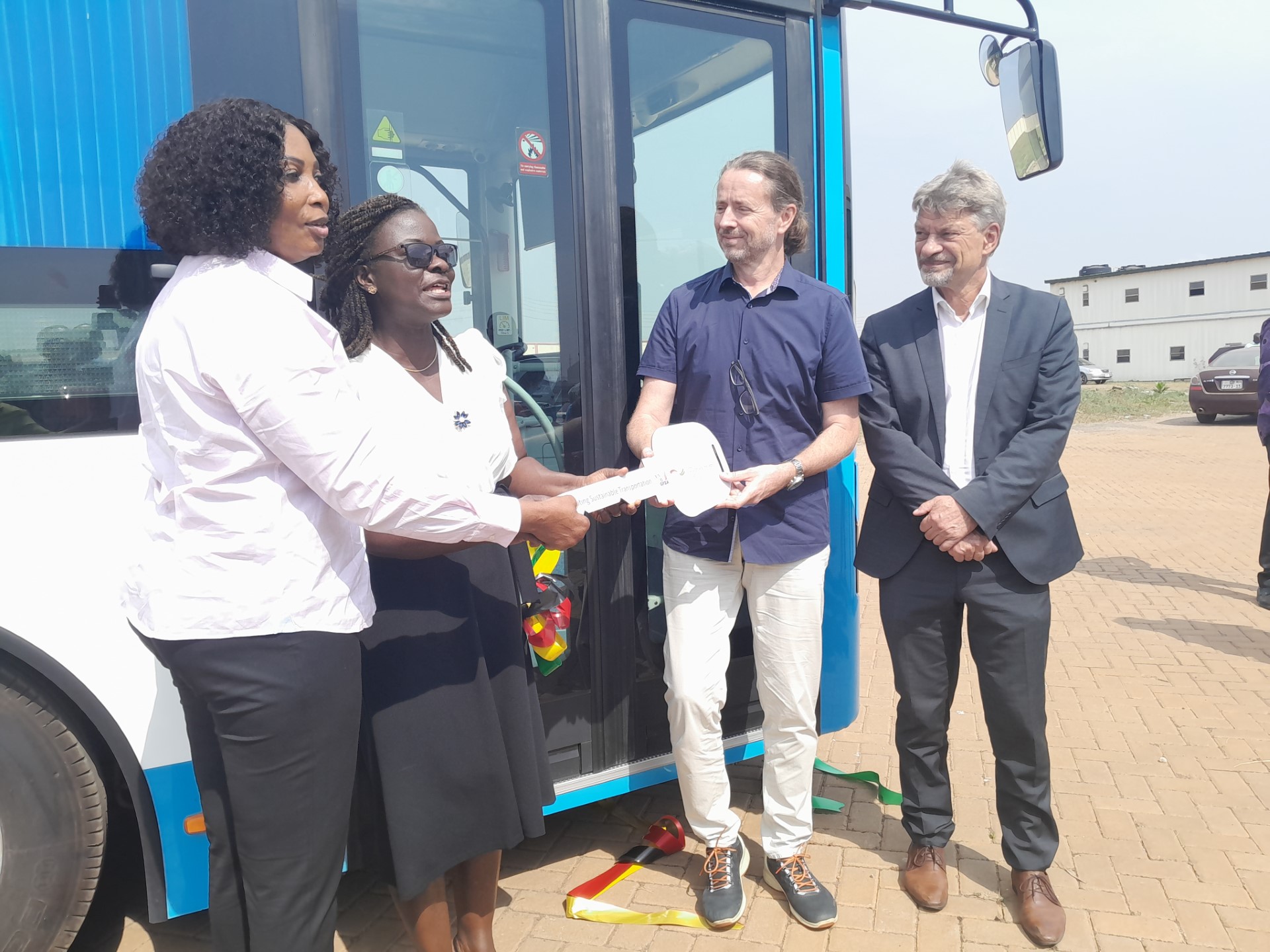
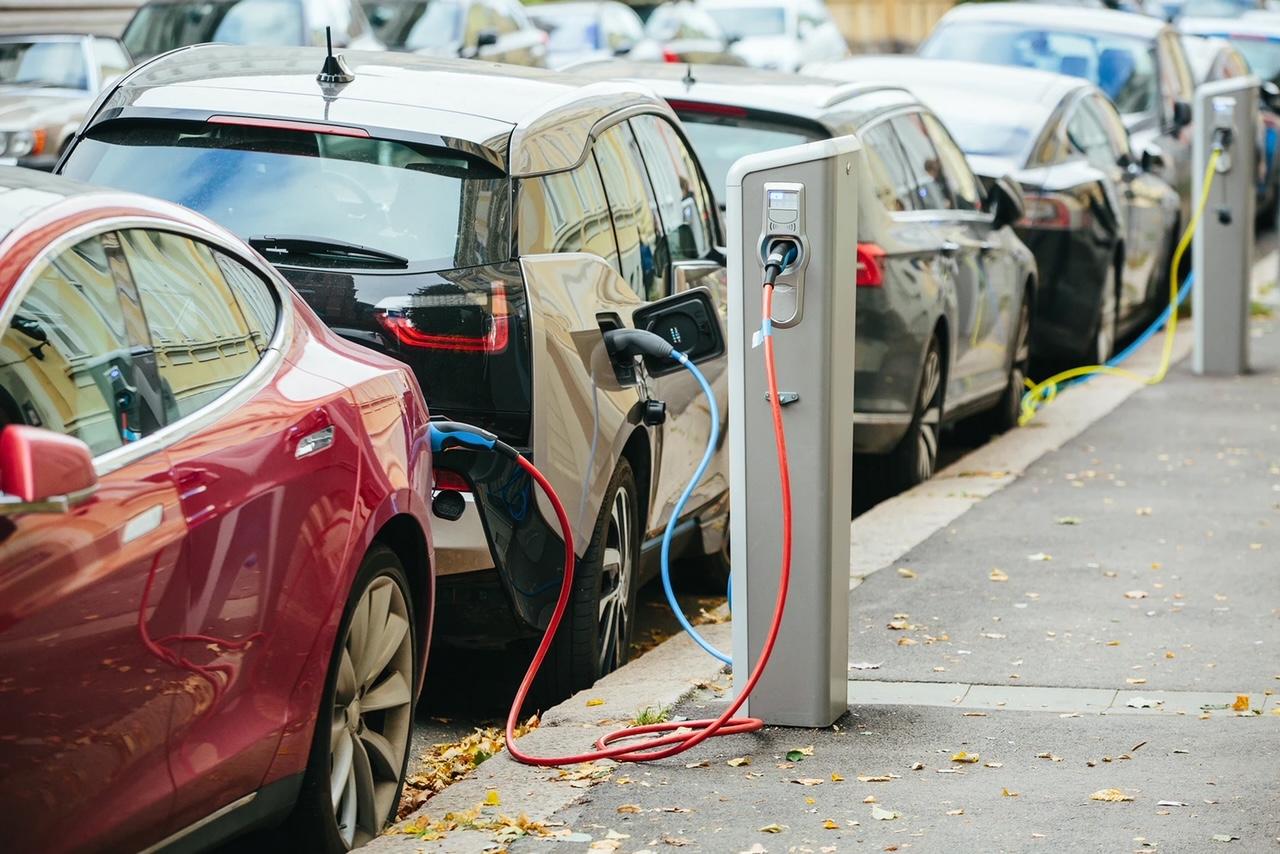


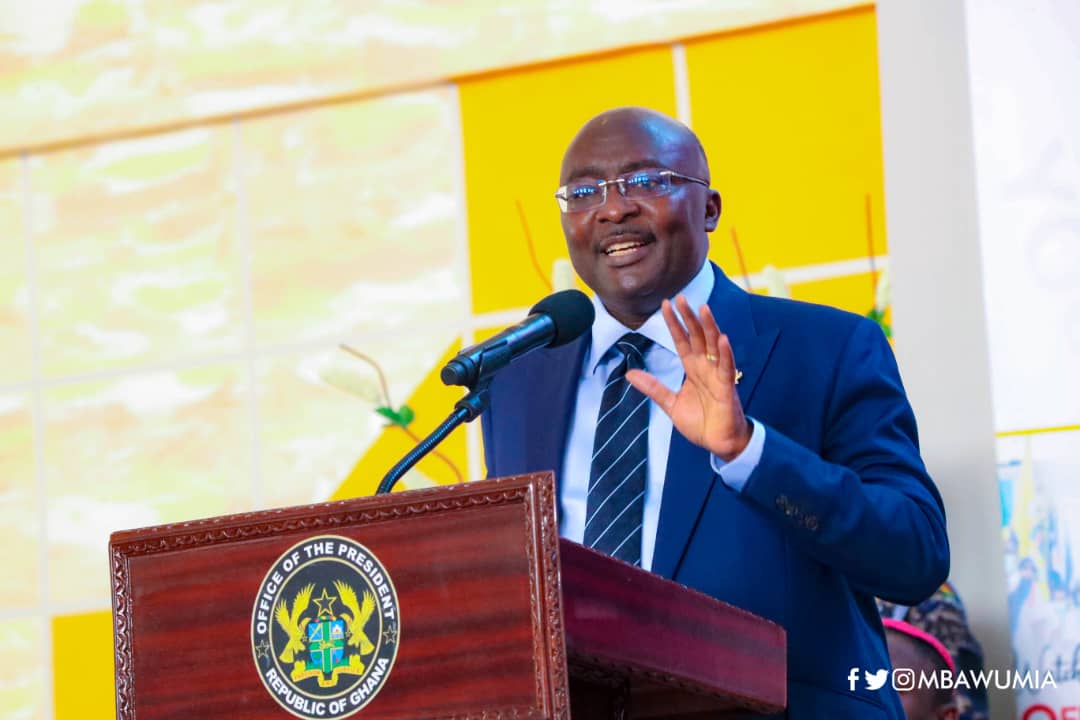
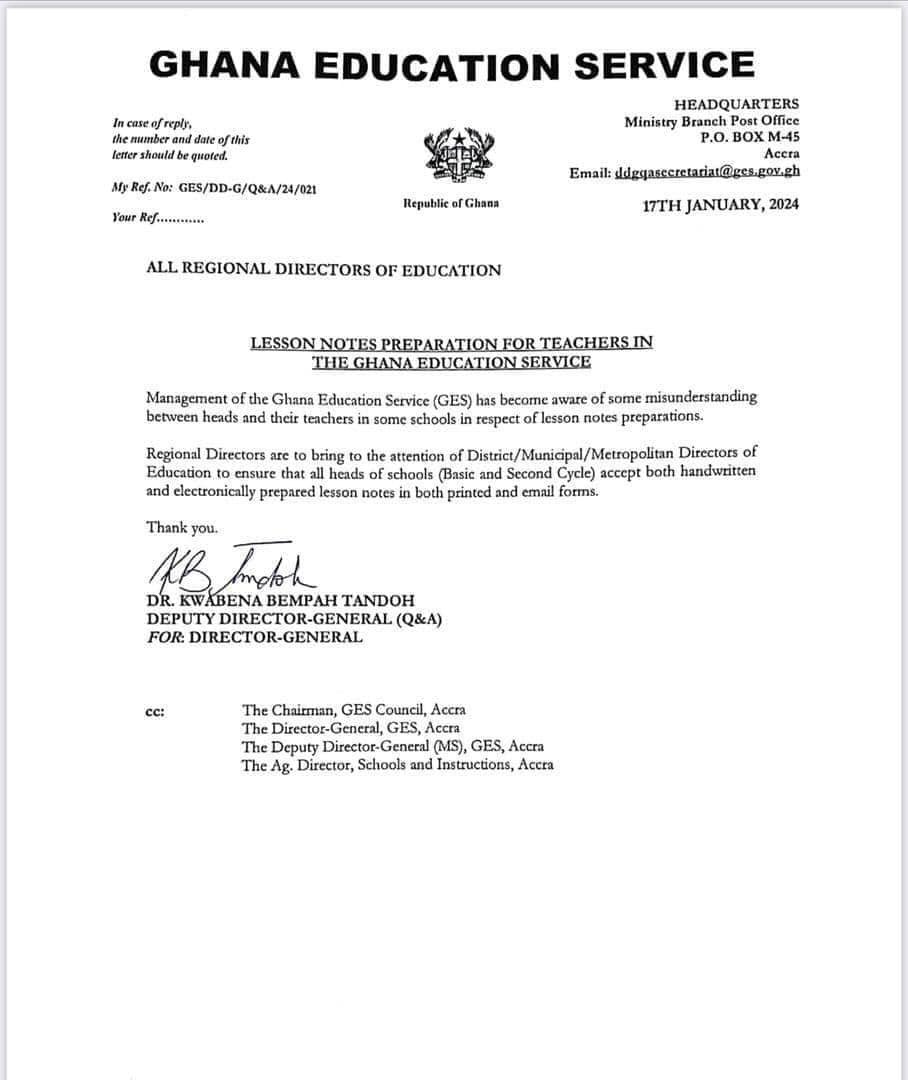


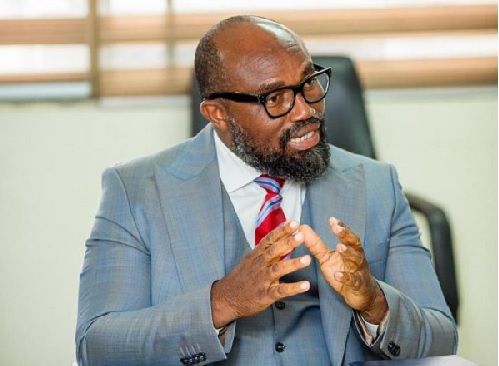


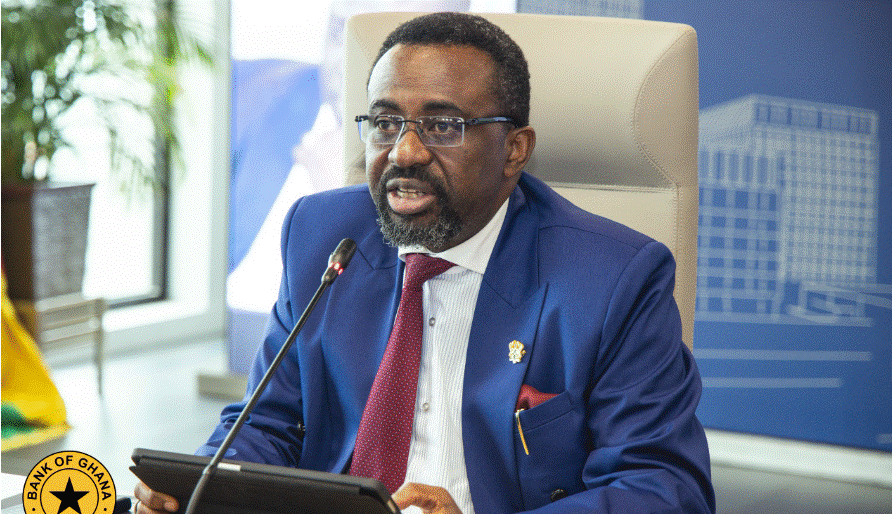
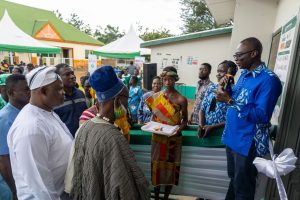








Facebook
Twitter
Pinterest
Instagram
Google+
YouTube
LinkedIn
RSS